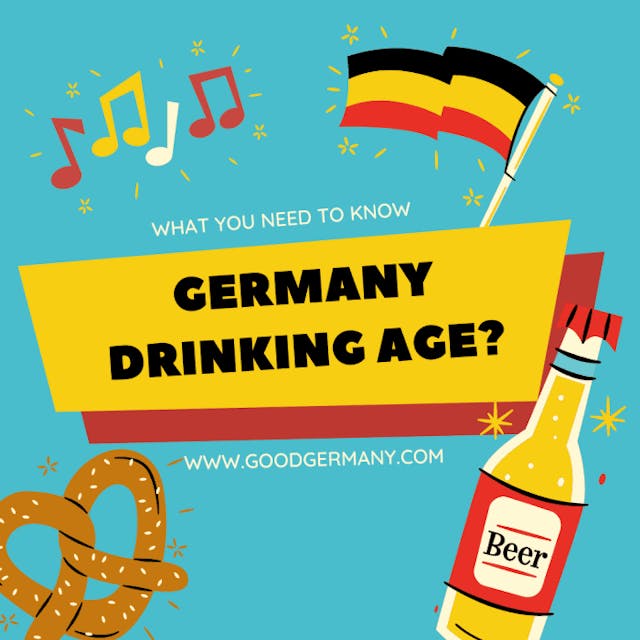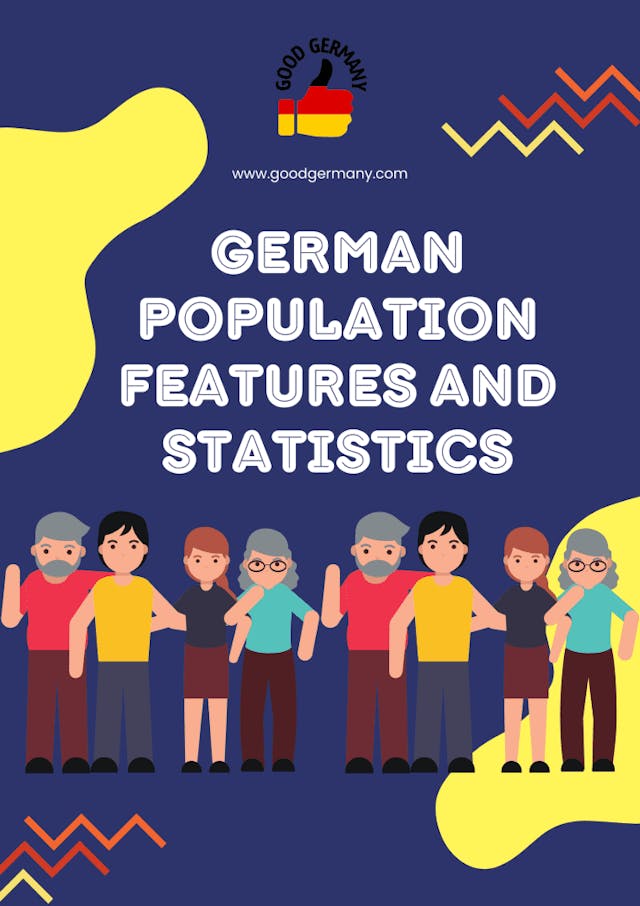German Population Features and Statistics
2023-09-01

Germany is a European powerhouse known for its rich history, cultural diversity and economic strength, and this article will explore the complexity of Germany’s population, looking at its size, composition, trends and its uniqueness in a global context. Germany has a population of about 83 million .
Germany’s population landscape
1. Population size and growth
Germany boasts a population of around 83 million and is the most populous country in the European Union. Despite the declining birth rate, the country’s population remains relatively stable due to immigration. The table shows population trends in Germany in recent years, with 2021 shown as an estimate. Germany’s population can fluctuate slightly over time, so it’s best to check the current and accurate population with the official statistical office or relevant authorities.
year | Population (unit: million people) |
2000 | 82.18 |
2005 | 82.44 |
2010 | 81.75 |
2015 | 82.18 |
2020 | 83.02 |
2021 | 83.16 (estimated) |
2. Historical Perspective
A brief look at Germany’s history highlights the impact of World War II and subsequent demographic fluctuations, including the partition and reunification of East and West Germany. These events had long-lasting effects on the country’s population composition.
3. Population by city in Germany
Each of Germany’s major cities has its own unique character and history, and represents the diversity of the country as a whole. Population data by major cities are shown below.
Berlin
Population: About 3.6 million
Berlin is the capital and largest city of Germany and is famous for its diverse cultural and historical heritage.
Hamburg
Population: About 1.8 million
Hamburg is an important port city located on the North Sea and the Elbe River, and has a great influence on its economy and trade.
Munich
Population: About 1.5 million
Munich is the capital of Bavaria and plays a major role in culture, art and economy.
Cologne
Population: About 1 million
Cologne is the capital city of North Rhine-Westphalia, famous for its cathedral and beer festival.
frankfurt
Population: About 7.5 million
Frankfurt is famous as a financial centre, and is home to the European Central Bank and the European Stock Exchange.
Stuttgart
Population: About 6 million
Stuttgart is a city of interest in the automotive industry and technology, as well as cultural activities.
Leipzig
Population: About 5 million
Leipzig is a cultural and artistic center, rich in music festivals and museums.
Dortmund
Population: About 5 million
Dortmund is a central industrial city with strong economic development and is well known to football fans.
German Diversity
3. Ethnic and cultural diversity
Germany is known as a multicultural society with a significant immigrant population. People from different backgrounds form the country’s rich diversity, mixture of languages, cuisines and traditions that make it diverse.
The major ethnic groups in Germany include Germans, Turks, Italians, Poles, Syrians, Greeks, and Romanians. Ethnic diversity is also increased by immigrants from various regions, including Africa, Asia, the Middle East, and Latin America.
Sure! The following table contains demographics of the main races in Germany. Please note that demographics for Germany can vary by year and survey method, the data below are based on rough estimates.
race | Population rate (%) |
German | 76.9 |
Turkish German | 2.8 |
Polish German | 1.5 |
Italian German | 1.3 |
Russian German | 1.0 |
Syrian German | 0.9 |
other races and nationalities | 15.6 |
This table is a rough estimate; actual data may vary depending on official statistics provided by governments and census agencies. Germany is a multicultural society where people of different races and nationalities live together, and this diversity forms the country’s rich cultural and social character.
4. Age distribution
A survey of age groups in Germany shows that the proportion of the elderly population continues to grow, posing unique challenges related to health care and social services.
Factors Affecting Population Trends
5. Birth rate
Falling birth rates have been a concern in Germany for years. We explore the factors contributing to this trend and the efforts governments are taking to encourage childbirth.
6. Immigration patterns
Germany has welcomed immigrants from various countries, especially in recent decades. The impact of immigration on population growth, economics and cultural dynamics is discussed.
Information on immigration demographics in Germany is as follows:
immigrant population size
Germany is a multicultural society with immigrants of various nationalities and backgrounds.
The relatively high immigration population in recent years has increased Germany’s diversity.
country of origin
Germany’s main immigration destinations include Turkey, Italy, Poland, Syria, Greece and Romania.
Immigrants are moving to Germany not only from European countries, but also from various regions such as Asia, the Middle East and Africa.
purpose of immigration
Immigrants come to Germany for a variety of reasons. Job search, family reunification, study, and refugee applications are the main immigration purposes.
Immigrant population by city
Germany’s major cities, especially Berlin, Frankfurt, and Hamburg, are home to immigrants from many different nationalities, with a high level of cultural diversity.
Refugees and persons of international protection
Germany has adopted a welcoming policy for refugees and persons of international protection, and their numbers are steadily increasing.
Social and Economic Participation of Immigrants
Immigrants play an important role in Germany’s society and economy, finding jobs in a variety of occupations and providing skills and labor.
multicultural society
Germany’s growing immigrant population has created a multicultural society, showing diversity in various aspects such as various cultural events, food, language and art.
Germany’s immigration demographics are constantly changing, with people of all nationalities and backgrounds starting a new life here.
Regional gap
7. Urban and rural population
Germany’s population is concentrated in urban areas such as Berlin, Munich and Hamburg. The reasons for these urbanization trends and their impact on rural areas are analyzed.
8. Division of East and West
The reunification of East and West Germany made a difference in population density and economic development. We examine these regional gaps.
Social and Economic Impact
9. Labor force
Germany’s demographic challenges intersect with labor demand. Explore the impact of an aging population on the labor market and potential solutions.
10. Medical and Elderly Care
With an aging population, medical and senior care services are gaining traction. We review policies to ensure quality care for seniors.
Conclusion
Finally, Germany has also played an important role historically and is now known for its strong economy and cultural diversity. It faces challenges such as a declining birth rate and an aging population, but it has a multicultural heritage and a strong economy.
Frequently Asked Questions (FAQs)
What is the current population of Germany?
According to current data, Germany has a population of around 83 million.
What are the main reasons for Germany’s low birth rate?
Several factors contribute to Germany’s low birth rate, including economic problems, work-family balance and high childcare costs.
How has immigration affected Germany’s population growth?
Immigration has played an important role in maintaining population stability in Germany. This has contributed to economic growth and cultural diversity.
What steps is the German government taking to respond to population challenges?
The government is investing in health care and elderly care, along with policies to encourage family planning and immigration.
What is the most populous city in Germany?
Berlin, Hamburg and Munich are some of Germany’s most populous cities and are known for their economic importance and cultural vitality.
Share
Tag
Related Blog

Germany Area Codes(Number) +0XX
2023-09-06
Public Holidays in Germany – From 01 to 12
2023-09-05
German Association of Craftsmen(Deutscher Werkbund) in 1907
2023-09-28
German sauna (nude) – 4 Benefits and 3 Etiquette
2023-09-22
The Voice of Germany 2023: New Coaches and Exciting Changes
2023-09-19
Germany Drinking Age: 16 or 18?
2023-09-11
Celebrating Teachers’ Day in Germany: A Tribute to Educators
2023-09-05
German Population Features and Statistics
2023-09-01
German Music Artists: Top 3 in each Genre
2023-10-21